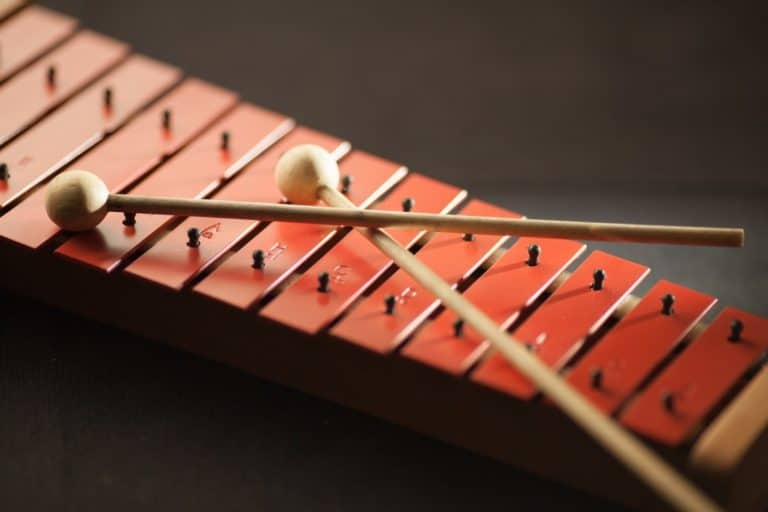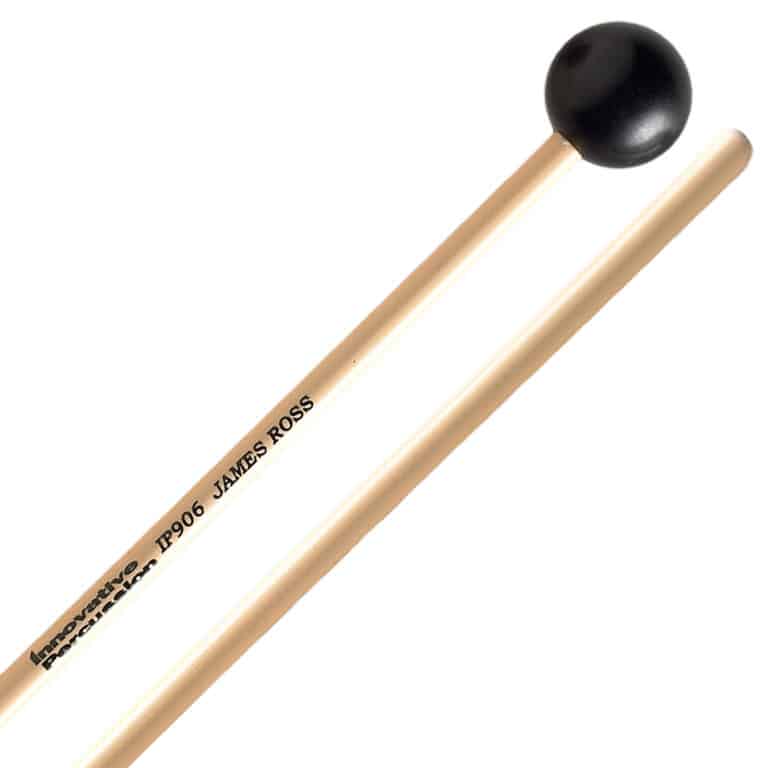7 Best Woods for Xylophones Explained – In Depth
Xylophones are musical instruments that are part of the percussion family and they consist of several wooden bars. These bars are the most essential part of the xylophone; without them, there is no sound
What is the best wood for Xylophone? – Honduran Rosewood – Other Rosewoods are used as well as alternative woods but the rare Honduran variety is considered the best as the choice of professional Xylophone makers worldwide due to its high density, elasticity factor, and a low damping coefficient. It is also the first choice for the Marimba instrument.
In this article, you will find a summary of the most prominent types of wood when it comes to producing the materials needed to design said xylophone bars. You will gain insight into the pros and cons and how they compare to each other when it comes to the price.
Xylophone Bar Material List
Below you will find more information on this list of woods used in Xylophone construction
- Honduran Rosewood
- Amazon Rosewood
- Granadillo
- African Padauk
- Merbau
- Wenge
- Pau Rosa
Honduran Rosewood
First up, we have the Honduran Rosewood, derived from Central America. Honduran Rosewood is a traditional player in the xylophone bars market and is globally seen as one of the most high-quality brands of wood out there.
Also used in Marimbas, this kind of wood has a very high density and that’s responsible for the crystal clear sound that Honduran Rosewood is able to generate. It’s that specific sound that makes xylophone players all over the world consider Honduran Rosewood as their first choice.
Moreover, the speed of the sound of the wood is amazing and it also has a high elasticity factor and a low damping coefficient. All these characteristics make Honduran Rosewood the current best player in the xylophone market because they all contribute to the very high quality of the product.
Furthermore, Honduran Rosewood is very durable and can truly protect itself against several insect attacks for example.
What really makes the Honduran Rosewood stand out though, is its hardness. As a consequence, xylophones consisting of such wood can really handle the power of even the hardest mallets without there being any kind of damage.
However, sometimes these strengths can also be a disadvantage. The wood can stand the power of hard xylophone mallets, but because of its high density, other hard materials can cause the wood to splinter, thus rendering your xylophone useless.
Another big problem with the Honduran Rosewood is its very limited availability. Although not endangered, the wood is listed on the CITES Appendix II as a result of being exploited to a maximum. Adding to that, Honduran Rosewood trees generally don’t grow very fast. Both factors caused a significant decrease in Rosewood trees, resulting in scarcity.
In conclusion, the Honduran Rosewood is a very vulnerable kind of wood and must be treated with the utmost carefulness and can’t be exposed to humid and overly warm conditions, seeing as that would have a negative effect on its tuning abilities.
Honduran Rosewood remains the biggest player on the market of acoustic wooden instruments in general and specifically on the market of xylophones, but still, it is the case that it’s mostly meant for professional xylophone players. That’s mainly because it takes that kind of professionals with a certain amount of expertise to really be able to play xylophones consisting of such vulnerable wood. Only they can treat it with the needed respect.
All this translates into a very high purchase price. Xylophones with Honduran Rosewood bars are very scarce in the United States and are almost considered a luxury good because of it. That’s what makes them really expensive, however, you can’t deny the high quality that comes with it.
Amazon Rosewood
The Amazon Rosewood tree, named after its origin, is one more kind of tree that belongs to the famous Rosewood family of trees and as a result, you can find a whole lot of similarities when you compare all of them.
When used to construct xylophone bars, the Amazon Rosewood wood is able to guarantee an extraordinary resonance and quality of sound, again because of its high density.
Besides that, a lot of xylophone players pick xylophones with Amazon Rosewood bars because it’s so aesthetically pleasing. Most of the time, the wood appears to be brown, but often, there are also colors like yellow, orange, brown, red, black, violet and pink involved. This makes this kind of wood really stand out from the rest and it’s often a deciding factor for many xylophone players.
As well as the Honduran Rosewood, the Amazon Rosewood is really durable and has an overall very high quality.
The Amazon Rosewood is not yet considered endangered but just like the whole Rosewood family, there’s a lot of legal regulation involved to protect it from reaching that stadium. Another disadvantage is the possibility of there being allergic reactions in response to the wood when playing the xylophone with Amazon Rosewood bars.
As mentioned before, the whole Rosewood family is very alike, however, one thing that makes the Amazon Rosewood different is the fact that it’s more defined than the other Rosewood tree, but also its particular heaviness. As a result, there is a higher possibility of pinholes and cracking when it’s not handled with the utmost prudence. While the density is one of its greatest assets, it’s also a disadvantage because it increases the risk of the wood splintering, resulting in it being unfit to be used as material for xylophones and other acoustic instruments.
Thus, the Amazon Rosewood is really tender and is only minimally available on a global level. As well as is the case with Honduran Rosewood, the Amazon Rosewood xylophones bars are meant to be played by professionals to guarantee that it’s played right and to avoid misuse and damage.
Another side effect again is the price. When purchasing a xylophone with Amazon Rosewood, you will pay about the same amount as would be the case if you were buying a xylophone with Amazon Rosewood, so it’s overall really expensive.
Granadillo
Because of the decrease in Rosewood trees, the xylophone market needed new types of wood that could maintain the same level of quality and that could be used to design the xylophone bars. Granadillo wood originated from Central America, is kind of a newcomer in the wood industry and meets those requirements. The fact that it’s a new player in the market, doesn’t have to be a disadvantage at all. The wood is seen as the best material for producing xylophone bars in South America and now it’s also gaining popularity in the United States and the rest of the world.
That gaining popularity partly stems from the deep and rich color of the wood. In general, granadillo wood is a mix between red and brown, but sometimes there are also traces of black, violet and orange involved, creating an alluring and diverse color palette. That’s why a lot of xylophone players prefer this kind of wood for their xylophone bars, because of aesthetic reasons.
Another plus that xylophone players experience with this kind of wood is the particular smell. Some people describe it as caramel, others as cinnamon or cotton candy, which are all pleasant smells.
Granadillo wood is often seen as the second-best kind of wood for xylophone bars, after the rosewood kind of wood. The wood owes that reputation, mostly because of its capability of producing a beautiful, uncommon sound and dazzling ringing tone that is able to sustain for a relatively long amount of time. Besides that, the wood produces less oil than Rosewood, which makes it easier to glue and to work with from the perspective of the producers of xylophones. Also, Granadillo wood creates less of a risk of allergic reactions than Rosewood, which is also a plus with practical importance.
Another great advantage of using Granadillo wood for the xylophone bars is the hardness of the wood. As a result, the wood generates better vibrations and that equals an overall better sound that generates from your xylophone bars.
All great xylophones consist of wood with a high density, which further increases the quality of the sound being produced via the xylophone and that’s an area where Granadillo truly excels at, just like Rosewood.
Lastly, Granadillo wood is very durable and can last many years, which only adds to the already high quality.
Xylophones with Granadillo wooden bars can be used for practically everyone. Both professional xylophone players and beginning students can experience the quality and individuality of this kind of wood, just because it’s so user friendly, anyone can use it.
Keeping in mind that xylophones using Granadillo wood are relatively rare, especially in the United States, the scarcity translates into the cost price, which is definitely not cheap. Au contraire, those kinds of xylophones are almost as expensive as Rosewood xylophones, however, the price-quality ratio doesn’t disappoint in the least.
African Padauk
Xylophones with bars consisting of African Padauk wood are considered to be a reasonable, cheaper alternative for those who can’t afford xylophone with Rosewood bars.
It’s definitely a cheaper kind of wood, but that doesn’t affect its ability to achieve a good quality of sound. admittedly, it’s not on the same level as Rosewood or Granadillo, but it certainly has its own appeal. It’s a great alternative and is often preferred by xylophone producents because it’s a kind of wood that is really easy to handle and shape into xylophone bars.
Of course, the lower price has a few consequences. While the sound quality is more than acceptable, it certainly is less profound than the sound quality that comes with the more expensive brands. This is primarily the result of a lower density and damping coefficient. Besides that, there’s also a higher chance to dent the xylophone bars if you’re not careful, especially while using hard mallets.
Additionally, the durability of these kinds of xylophones suffers sometimes, seeing as the African Padauk wood is very sensitive and susceptible to humid conditions and other undesirable weather circumstances.
Nonetheless, Xylophones with African Padauk wooden bars can hold their own as a cheaper alternative for the expensive brands. It can be used on all kinds of xylophones, but it’s best used by beginning xylophones players that are still learning to play the xylophone, seeing as there’s more room for eventual mistakes.
As already mentioned, the African Padauk wood is characterized by its low-cost price. Besides the somewhat diminished quality of sound, a great factor here is the wide availability in Africa, which prevents the wood from becoming a luxury product that’s only accessible for rich people.
Merbau
Merbau wood might be a lesser-known brand of wood in the area of xylophones, but it should not be overlooked, because it has some great qualities. For example, it’s a very strong kind of wood that can truly increase the quality of the xylophone because it’s not easily broken or damaged. This kind of wood glues well and it’s very easy to shape into xylophone bars. The best part about Merbau wood, however, is its durability. It keeps its quality in all kinds of circumstances and can combat certain plagues like rotting and insects. This truly makes for a xylophone that you can use for a very long time.
The downside is that there are certain negative side effects involved. Sensitive xylophone players can experience mild allergy symptoms in reaction to coming into contact with the Merbau wood. Some players also find the smell coming off of the wood to be irritating to the eyes and it can even cause sneezing.
Although the overall quality of xylophones with Merbau wood bars is valuable, sometimes the tuning isn’t very reliable. As a result, the tones and sound produced by your xylophone may not live up to your expectations and leave something to be desired.
Just like many other kinds of wood named in this article, Merbau wood is considered to be vulnerable because of the decreased availability and is even listed on the ICN red list.
It seems as if the vulnerability of the Merbau wood balances the somewhat lesser quality out and this results in an acceptable cost price of the wood. it’s not cheap because the offer is limited, but in general, it’s affordable and the price-quality ratio is great.
Wenge
Another valid player in the xylophone bars business is Wenge wood. it often gets overlooked, which is a shame for sure. The wood comes with great strength and hardness and thus can stand its ground against the touch of all kinds of xylophone mallets. The wood can combat termite attacks and it also contributes to the durability of the xylophone. Xylophones with Wenge wood bars generally last a long time, which makes them a great investment for beginning xylophone players in particular.
Disadvantages are that xylophone players sometimes struggle with the smell of Wenge wood and they describe it as being very bitter and unpleasant. This kind of wood also doesn’t have the highest density, which sometimes causes the quality of the sound to suffer. However, this is not always the case! most of the time, xylophones with Wenge wooden bars are perfectly able to generate beautiful sounds.
Similar to xylophones with Granadillo wooden bars, xylophones with Wenge wooden bars can be used by just about everyone. It’s a great choice for professional xylophone players that want to spend many years with the same xylophone, but the same goes for beginning xylophone players that want space for mistakes without causing irreversible damage.
When it comes to environmental protection, Wenge is no exception. The wood is listed on the IUCN red list and thus the demand for xylophones with this kind of material is often higher than the supply. This translates into a high purchasing price of those kinds of xylophones.
Pau Rosa
Last but not least, Pau Rosa is another kind of wood that’s often used to create xylophone bars. it’s a strong kind of wood that’s not easily scratched and thus it’s perfect for the xylophone. Besides strength, this kind of wood also comes with great beauty. the wood is a warm shade of brown, but also has elements of almost all the colors of the rainbow. A lot of xylophone players agree with its beauty and that makes these kinds of xylophones very popular.
less favorable aspects of using this kind of wood for your xylophone bars is the lesser amount of density. This ensues in a less rich sound that doesn’t sustain for very long. Besides that, loads of xylophone players that use this kind of wood have experienced skin reactions as a result of coming into contact with Pau Rosa wood.
As said, xylophones with Pau Rosa wood bars are very strong, but they are also easy to handle. That makes them perfect for beginning xylophone players because they are not all too fragile.
Xylophones with Pau Rosa wood bars are a little more expensive than average and that has to do with the fact that the wood is not common in the United States. Thus far, you can only really find it in Africa.
Xylophone Bar Replacement
If you should damage a bar on your xylophone beyond repair (most can be repaired), you can find a range of replacement bars at LoneStar Percussion.
Another reason to take car of your xylophone is the cost of replacement bars. They do not come cheaply, so keep a good care schedule for your xylophone to extend the life of the bars and your instrument in general.
Xylophone Bar Material Summary
In conclusion, there are different kinds of wood for your xylophone, depending on what you’re looking for. If you want the highest quality of xylophone bars, the Rosewood or Granadillo xylophones may be the right choice for you. If you’re willing to compromise a little on the quality so that you don’t have to pay as much, African Padauk xylophones definitely should be in the back of your mind. It all depends on your own preferences!






